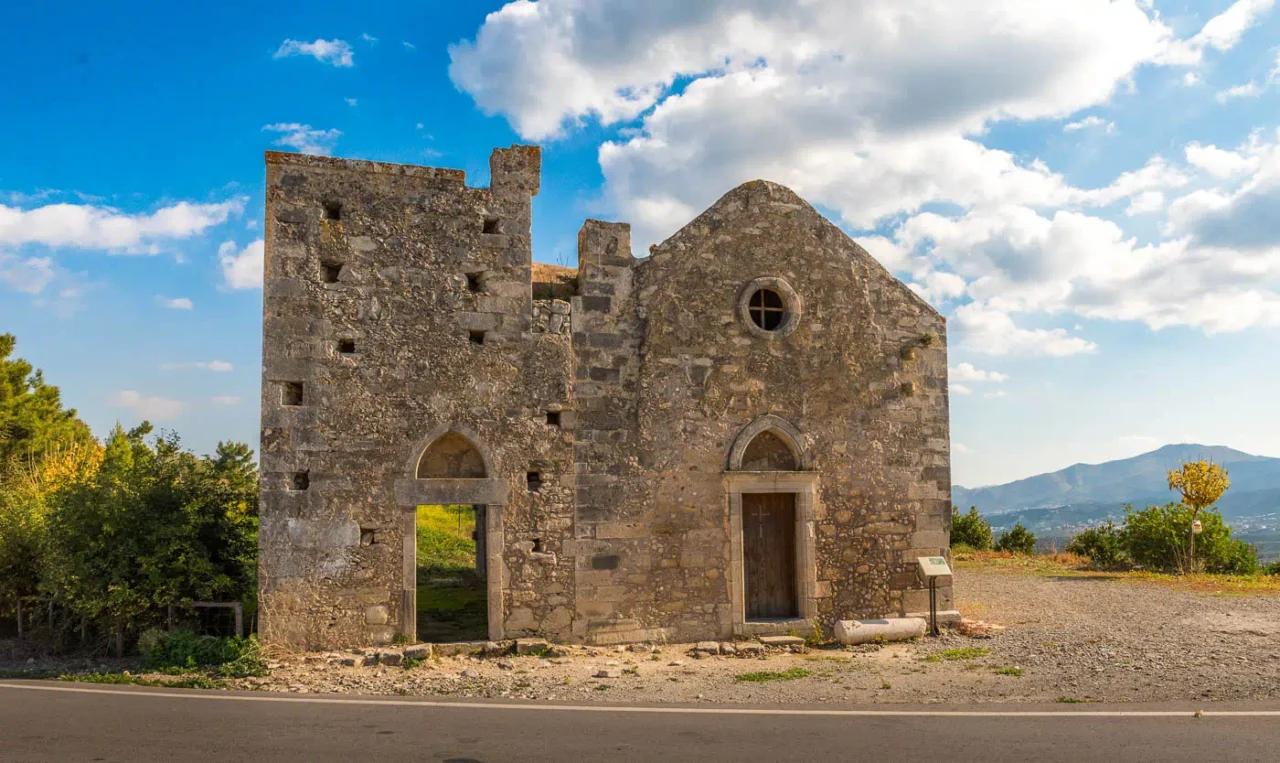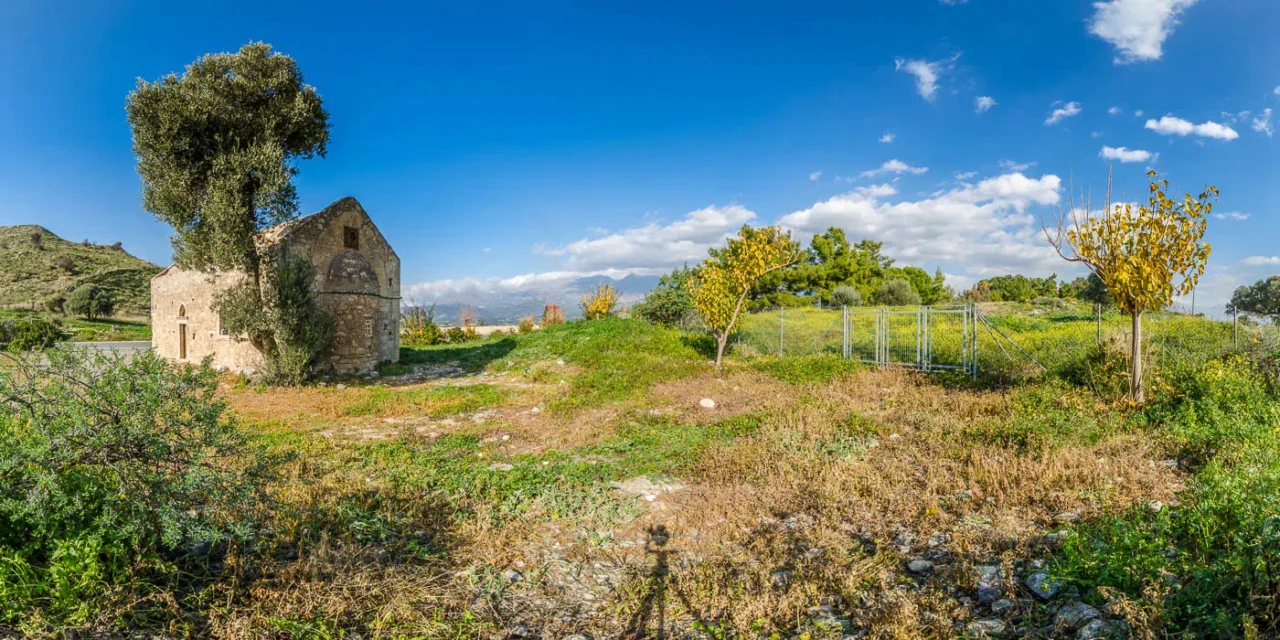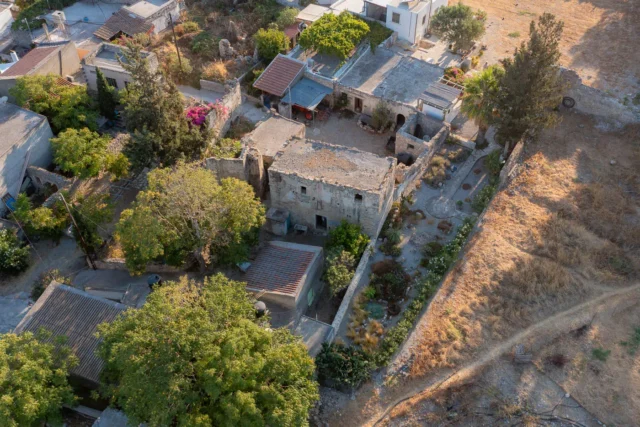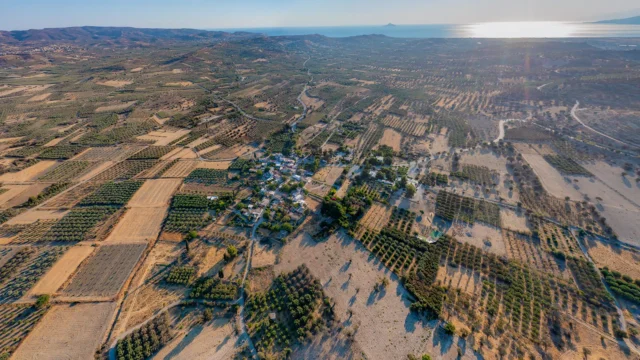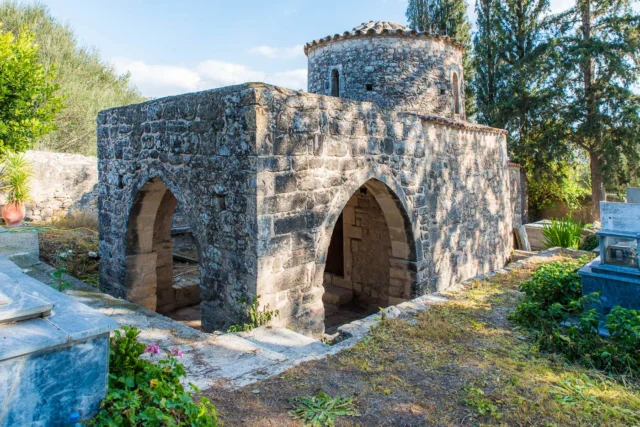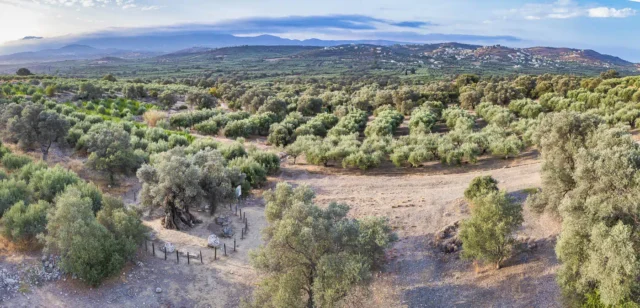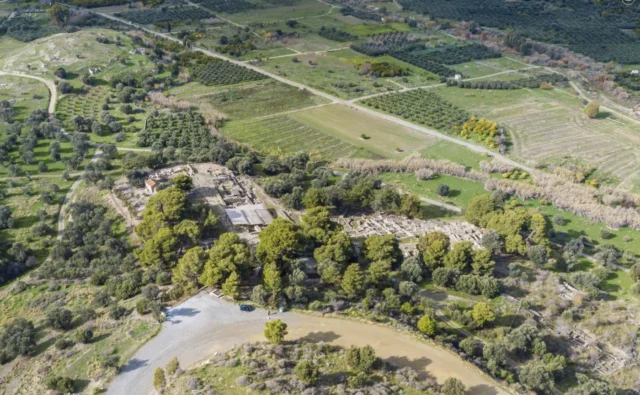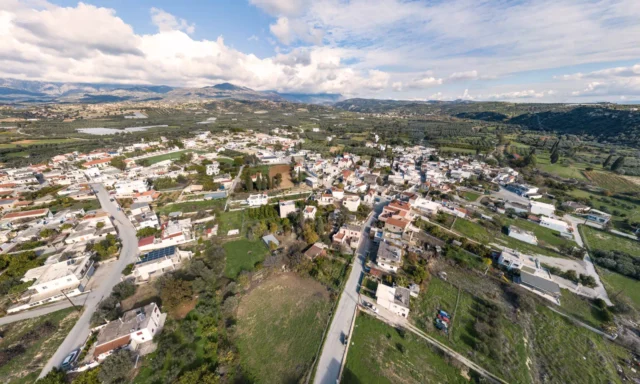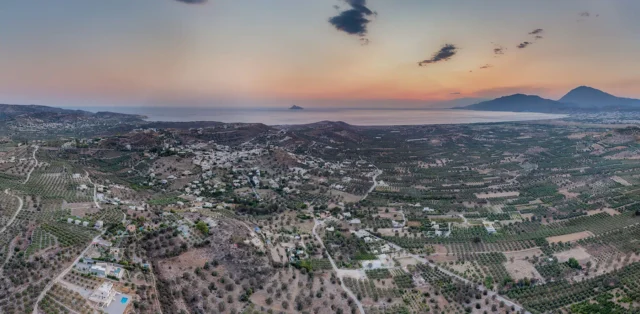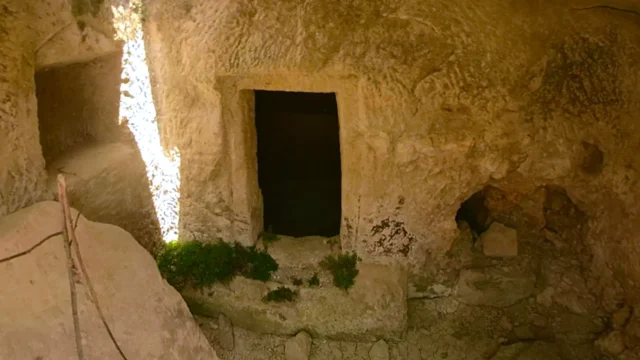The Church of Agios Georgios in Falandra is located on a hill in Phaistos, Crete, approximately 100 meters southwest of the entrance to the archaeological site of Phaistos. The church is the only surviving structure of the monastery of St. George “of Douvrika”, or of Falandra, which was destroyed by the Turks during the Greek Revolution of 1821. The church is believed to have been built in the late Venetian period (16th century).
The church is a single-nave, barrel-vaulted structure with a tiled roof. The north side of the church features a large arch, suggesting that it was originally a twin-naved church. The church also has a tower-like belfry, similar to that of the monastery of Vrontisi. The belfry is not at its original height, as it has been partially destroyed. The church is surrounded by a fortified enclosure.
Etymology
The toponym “Falandra” or “Flandra” is believed to be a corruption of the word Filanda, which means “spinning mill” in Greek. This refers to the sericulture activity that the monks of the monastery of St. George of Falandra practiced.
History
The monastery of St. George of Falandra was originally founded by Saint John the Stranger (Agios Ioannis Xenos) at the end of the 10th century. Only the water tank survives from the original monastery. The church we see today was built in the late Venetian period.
During the Ottoman period, the monastery functioned as a dependency of the Arkadi Monastery. In 1742, the Byzantine water tank, which had been built by Saint John the Stranger, was renovated. An inscription on the fountain commemorates this renovation.
The monastery was destroyed in 1821 during the Greek Revolution. At the beginning of the 20th century, only the fortified walls, the cells to the south and west, the south aisle of the church, and the defensive tower in the west part of the north aisle survived.
In the summer of 1900, the Italian excavators of Phaistos camped at the monastery. The ruins of the fortified complex around the church survived until the first decades of the 20th century. Today, few traces remain.
A tomb with an inscription dating back to 1581 can be found near the church. This tomb is believed to be from the Venetian period.
- Construction Period: Venetian period, 16th century
- Location: Phaistos, Crete, Greece
- Historical Significance: The church is the only surviving structure of the monastery of St. George “of Douvrika”, or of Falandra.
- Current Status: In ruins
References
- Bredaki, M., & Longo, F. (2018). Phaistos Project (Survey Campaigns 2007-2011): Five Years of Studies and Surface Investigations. Στο: ΙΑ΄ Κρητολογικό, τ. Α2.1, σ. 23-43.
- Gerola, G. (1908). Monumenti Veneti nell’ isola di Creta, τ. II. Venezia: R. Istituto veneto di scienze, lettere ed arti.
- La Rosa, V. (2016). Del Monastero di S. Giorgio in Falandra a Festos (Creta). Στο: N. Bonacasa, F. Buscemi & V. La Rosa (επιμ.), Architetture del Mediterraneo. Scritti in onore di Francesco Tomasello. Thiasos Monografie, 6. Roma: Quasar, σ. 203-217.









